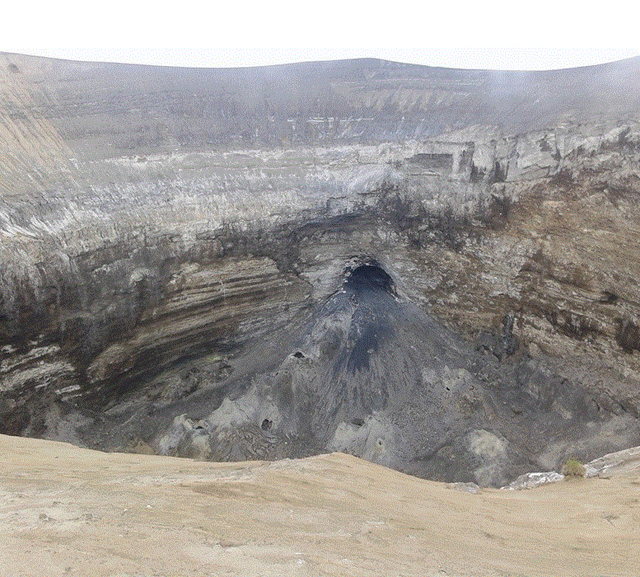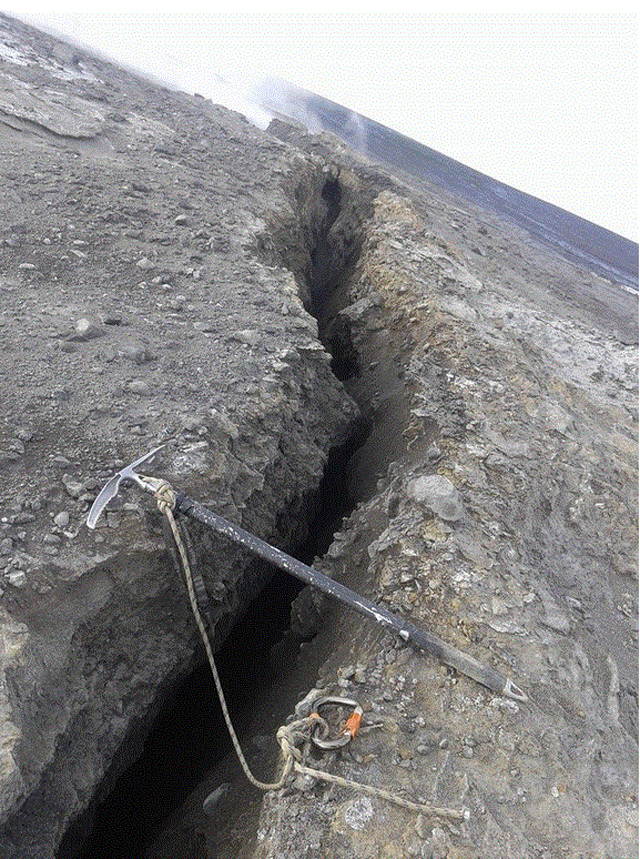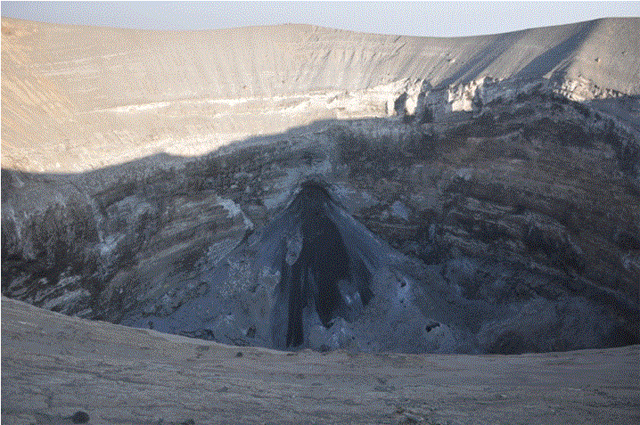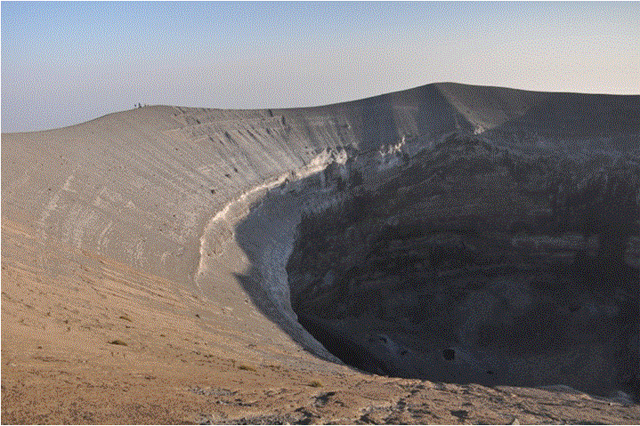Report on Ol Doinyo Lengai (Tanzania) — July 2014
Bulletin of the Global Volcanism Network, vol. 39, no. 7 (July 2014)
Managing Editor: GVP Staff.
Ol Doinyo Lengai (Tanzania) Lava fountaining observed from the active cone during March and July 2014
Please cite this report as:
Global Volcanism Program, 2014. Report on Ol Doinyo Lengai (Tanzania) (GVP Staff, ed.). Bulletin of the Global Volcanism Network, 39:7. Smithsonian Institution. https://doi.org/10.5479/si.GVP.BGVN201407-222120
Ol Doinyo Lengai
Tanzania
2.764°S, 35.914°E; summit elev. 2962 m
All times are local (unless otherwise noted)
Volcanism has continued at Ol Doinyo Lengai through July 2014. Though the volcano has been erupting since 1983 (with three breaks of about a year each), the currently active spatter cone within the N crater was first noted in April 2013 (BGVN 38:06). During March 2014, Ake Lindstrom observed activity in the crater and on the cracked terrain near the trail to the summit. This report also includes a description of the 4-5 July 2014 visit by a scientific team provided by Tobias Fischer. Except for the Fischer narrative, other visitor observations were abstracted from the Ol Doinyo Lengai website of Frederick Belton.
Observations in March 2014. On 12 March 2014, Ake Lindstrom of Summit Africa, a tour and climb outfitter, photographed the active N crater. Lindstrom reported that an overhang had formed on the W side of the near-vertical pit wall above the active cone (figure 171). Erosion was most noticeable where the near-vertical walls met the slope to the rim. Inside the pit, erosion appeared at the boundaries between layers. Lindstrom also noted a large crack located above the climbing route near the outside of the rim (figure 172).
 |
Figure 171. View into the N crater at Ol Doinyo Lengai from the E rim, 12 March 2014. There is an overhang on the W side of the pit wall. Courtesy of Ake Lindstrom. |
 |
Figure 172. A large crack on the N crater rim of Ol Doinyo Lengai, 12 March 2014. The crack lies near the top of the climbing route. Courtesy of Ake Lindstrom. |
Observations during July 2014. Tobias Fischer and a team consisting of Hyunwoo Lee, Nicole Thomas (University of New Mexico), James Muirhead (University of Idaho), Melania D. Maqway (University of Dar Es Salaam), and Steve Goldstein and Kerstin Lehnert (LDEO/Columbia University), visited the volcano during 4-5 July 2014. They observed lava fountaining, and cracks near the rim contained sloshing lava and emitted gases. The cracks, eruptive vigor, and other features suggested instability of the N crater and a resulting risk to climbers. The crater was observed from a portion of the W rim where there was a narrow (80 cm) path (figure 173). Ash and bombs dating from 2007 and more recent eruptions were abundant on and in the the N crater ash cone.
Erosional rills extended from the rim down the ~60-degree slope to the vertical wall drop off. Outside the crater, ~30 m below the rim near the ascent trail, a ~30 meter long by 1-m-wide crack ran upslope. Gases and traces of sulfur deposits were observed along the crack, and lava was heard sloshing within it. Importantly, the activity eroded or dissolved the pit crater wall directly below the crack on the outside of the rim. Lava was observed ponding inside the cone and sporadic fountaining from at the ~30 m high cone located on the NW side of the N crater (figure 174). Fountaining lasted about 15 minutes between approximately 10-minute quiescent intervals.
 |
Figure 174. Fresh carbonatite lava flows can be seen on the cone in the NW part of Ol Doinyo Lengai's crater. Fisher noted that the lava ponded and sporadically fountained. Courtesy of T. Fisher. |
Geological Summary. The symmetrical Ol Doinyo Lengai is the only volcano known to have erupted carbonatite tephras and lavas in historical time. The prominent stratovolcano, known to the Maasai as "The Mountain of God," rises abruptly above the broad plain south of Lake Natron in the Gregory Rift Valley. The cone-building stage ended about 15,000 years ago and was followed by periodic ejection of natrocarbonatitic and nephelinite tephra during the Holocene. Historical eruptions have consisted of smaller tephra ejections and emission of numerous natrocarbonatitic lava flows on the floor of the summit crater and occasionally down the upper flanks. The depth and morphology of the northern crater have changed dramatically during the course of historical eruptions, ranging from steep crater walls about 200 m deep in the mid-20th century to shallow platforms mostly filling the crater. Long-term lava effusion in the summit crater beginning in 1983 had by the turn of the century mostly filled the northern crater; by late 1998 lava had begun overflowing the crater rim.
Information Contacts: Ake Lindstrom, Summits Africa general manager; Tobias Fischer, Department of Earth and Planetary Sciences, University of New Mexico, Albuquerque, NM 87131 USA; Frederick A. Belton, University Studies Department, Middle Tennessee State University, Murfreesboro, TN (URL: http://www.oldoinyolengai.pbworks.com).


